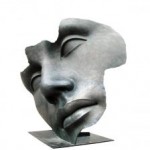IBM Looks to Patent Technology that Reads Human Feelings
 Los Angeles – A recent patent filing by the country’s leading holder of patents may be about to take the connection people feel with computers to a whole new level. According to an application published earlier this month by the United States Patent and Trademark Office (USPTO), IBM is seeking protection over technology that takes sensory input from humans and digitizes it in order to recognize and differentiate various human emotions.
Los Angeles – A recent patent filing by the country’s leading holder of patents may be about to take the connection people feel with computers to a whole new level. According to an application published earlier this month by the United States Patent and Trademark Office (USPTO), IBM is seeking protection over technology that takes sensory input from humans and digitizes it in order to recognize and differentiate various human emotions.
The patent is entitled, “Multiple Sensory Channel Approach for Translating Human Emotions in a Computing Environment,” and was filed by three IBM inventors from Texas. Per the particulars of the filing, the technology is encapsulated in a computer analysis program that is able to take several indicators of physiological data, including voice commands, heart rate and facial expressions, and analyze those inputs to determine whether a person is feeling happy, sad, tired, angry, confused, etc.
Specifically, the patent filing describes how these sensory inputs will be processed by means of “standards-defined sensory channels,” which will then provide “emotion dimensional values”, which correspond to range of human emotions. In order to get a correct read of a person’s emotional state, the system will have the ability to give certain physiological data higher priority. That data can then be used to activate other computer functions to interact with the user in a specific way based on their detected mood.
In addition to physiological input, the technology will also factor in environmental data as well as user-generated input, all of which will be aggregated to determine the user’s emotional state. Structurally, the patent mentions that the system will include a processor and operating system, an audio capture device and a physiological sensor, among other parts. It further sets forth that the system is capable of operating on general purpose computers like desktops and laptops as well as other devices, which are likely to include smartphones and tablets.
Though it is uncertain at this point whether this patent application will actually be granted (IBM files hundreds of patent applications each week), its filing exposes the technology industry’s ever-increasing interest in making computers more human-like. With added capabilities to make computer devices sensitive to what have up until now been exclusively human qualities, such as sensing and interpreting the emotions of others, the lines between what is human and what is computer may be blurring.













